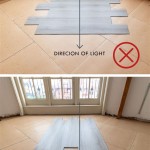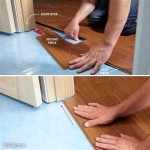Acacia Wood Flooring and the Janka Hardness Scale
Acacia wood has emerged as a popular choice in the flooring market, prized for its unique grain patterns, durability, and relatively affordable price point. Understanding the material properties of any wood species is crucial before investing in flooring. One of the most important metrics for assessing wood durability is the Janka Hardness Scale. This article will explore the Janka Hardness Scale in relation to acacia wood flooring, providing a comprehensive overview of what the rating means, how it compares to other wood species, and what implications it has for consumers.
The Janka Hardness Test measures the resistance of wood to denting and wear. Developed by Austrian-American wood scientist Gabriel Janka, the test involves measuring the force required to embed a steel ball with a diameter of 0.444 inches (11.28 mm) to half its diameter into the wood. The result is expressed in pounds-force (lbf), which represents the hardness rating. A higher Janka rating indicates a harder, more durable wood that is more resistant to scratches, dents, and general wear and tear. This rating is not a direct measure of impact resistance but rather an indicator of surface hardness.
It's important to note that the Janka Hardness Scale is a relative scale. It allows for comparing different wood species and assessing their suitability for various applications, including flooring. While a high Janka rating is generally desirable for flooring, other factors, such as the wood's stability, moisture resistance, and aesthetic appeal, also play a significant role in the overall suitability of a particular wood species for flooring.
Understanding Acacia's Janka Hardness Rating
Acacia wood, as a genus, comprises a wide variety of species. Consequently, the Janka Hardness rating for acacia flooring can vary depending on the specific species used. Generally, acacia flooring boasts a Janka Hardness rating that ranges from approximately 1700 lbf to over 2200 lbf. This places acacia in a relatively high position on the Janka scale, making it a durable choice for flooring applications. For instance, some popular acacia varieties, such as Australian acacia (also known as blackwood), can have a Janka rating exceeding 2000 lbf. This robust rating signifies that acacia flooring is well-equipped to withstand everyday foot traffic, furniture movement, and the impacts of accidental drops.
It's crucial for consumers to inquire about the specific species of acacia used in the flooring they are considering. While generically labeled as "acacia," the actual hardness can differ substantially between species. Manufacturers and retailers should be able to provide information about the exact acacia species and its corresponding Janka rating. This information empowers consumers to make informed decisions based on their specific needs and expectations for flooring durability.
The high Janka rating of most acacia flooring options translates to practical benefits. It means that the flooring is less likely to show scratches and dents from everyday use, thereby maintaining its aesthetic appeal for a longer period. This is especially advantageous in high-traffic areas such as hallways, living rooms, and kitchens. Furthermore, acacia's hardness contributes to its dimensional stability, meaning it is less prone to warping or cupping due to changes in humidity and temperature. However, proper acclimation and moisture control are still essential for any wood flooring, including acacia.
Comparison with Other Hardwood Flooring Options
To fully appreciate acacia's Janka Hardness rating, it's helpful to compare it with other popular hardwood flooring options. Red oak, a commonly used hardwood flooring material, typically has a Janka rating of around 1290 lbf. White oak, another popular choice, has a rating of approximately 1360 lbf. Comparing these figures with acacia's range of 1700 lbf to over 2200 lbf highlights acacia's superior hardness and durability. This greater hardness translates to a longer lifespan and better resistance to wear and tear compared to oak flooring.
Maple, known for its smooth grain and light color, has a Janka rating of around 1450 lbf. Again, acacia surpasses maple in hardness, suggesting that acacia flooring may be a more suitable choice for households with children or pets where flooring is subjected to higher levels of abuse. Hickory, considered one of the hardest domestic hardwoods, boasts a Janka rating of around 1820 lbf. While some acacia species may fall within a similar range, others can exceed hickory's hardness, making acacia a comparable or even superior alternative.
Brazilian Cherry, also known as Jatoba, is another flooring option often praised for its hardness. It has a Janka rating of around 2350 lbf, which is higher than the typical acacia rating. However, Brazilian Cherry is often more expensive and may have a more pronounced grain pattern than some consumers prefer. Furthermore, the sourcing of exotic hardwoods like Brazilian Cherry raises sustainability concerns for some buyers. Acacia, often sourced from more sustainable plantations, can offer a more eco-friendly alternative while still providing excellent durability.
Implications for Maintenance and Longevity
The inherent hardness of acacia wood flooring has significant implications for its maintenance and longevity. A higher Janka rating directly correlates with reduced scratching and denting, lessening the need for frequent refinishing. Floors with lower Janka ratings may require refinishing every few years in high-traffic areas, whereas acacia flooring can often withstand wear for a more extended period before requiring professional attention. This translates to long-term cost savings and reduced disruption to the household.
While acacia's hardness makes it resistant to surface damage, protective measures are still recommended to maximize its lifespan. Using rugs in high-traffic areas, placing felt pads under furniture legs, and promptly cleaning up spills can all help prevent scratches and stains. Regular sweeping or vacuuming removes abrasive particles that can dull the finish over time. A quality wood floor cleaner specifically designed for hardwood floors should be used for routine cleaning, avoiding harsh chemicals or abrasive cleaning tools.
Despite its durability, acacia flooring can still be susceptible to moisture damage. Excess moisture can cause wood to swell, warp, or cup. Therefore, it is crucial to maintain a stable indoor humidity level, especially during seasonal changes. Using a humidifier or dehumidifier can help regulate moisture levels. Additionally, proper acclimation of the flooring before installation is essential to allow the wood to adjust to the ambient conditions of the room. Failure to properly acclimate the flooring can lead to problems later, regardless of its Janka Hardness rating.
The finish applied to acacia flooring also plays a crucial role in its longevity and maintenance requirements. A durable finish protects the wood from scratches, stains, and moisture penetration. Polyurethane finishes are a popular choice due to their durability and resistance to wear. Oil-based finishes provide a natural look and allow the wood to breathe, but they may require more frequent maintenance. It is essential to choose a finish that is appropriate for the household's lifestyle and usage patterns.
In conclusion, the Janka Hardness Scale provides a valuable metric for assessing the durability of acacia wood flooring. Its relatively high Janka rating, compared to many other popular hardwood options, makes it a robust and long-lasting choice for both residential and commercial applications. By understanding the implications of the Janka rating and adopting proper maintenance practices, consumers can ensure their acacia flooring retains its beauty and functionality for many years to come.

Hardwood Hardness Chart Floor Depot

Janka Hardness Scale Impressions Flooring Collection

Your Guide To Finding The Most Durable Flooring Hardwood Bargains Blog Www Hardwoodbargains Com

West Wood Flooring Solutions Harmony Janka Hardwood Floors

Characteristics Of Wood For Flooring Lordparquet Floor A Professional Supplier

Janka Hardness Scale Acacia Hardwood Flooring Bamboo Lumber Liquidators

Hardwood Hardness Ratings Woodchuck Flooring San Diego

Understanding The Janka Scale Hardness And Stability Ll Flooring

Janka Scale Wood Hardness Evergreen Hardwood Floors Inc

Janka Hardness Scale Logs End
Related Posts








